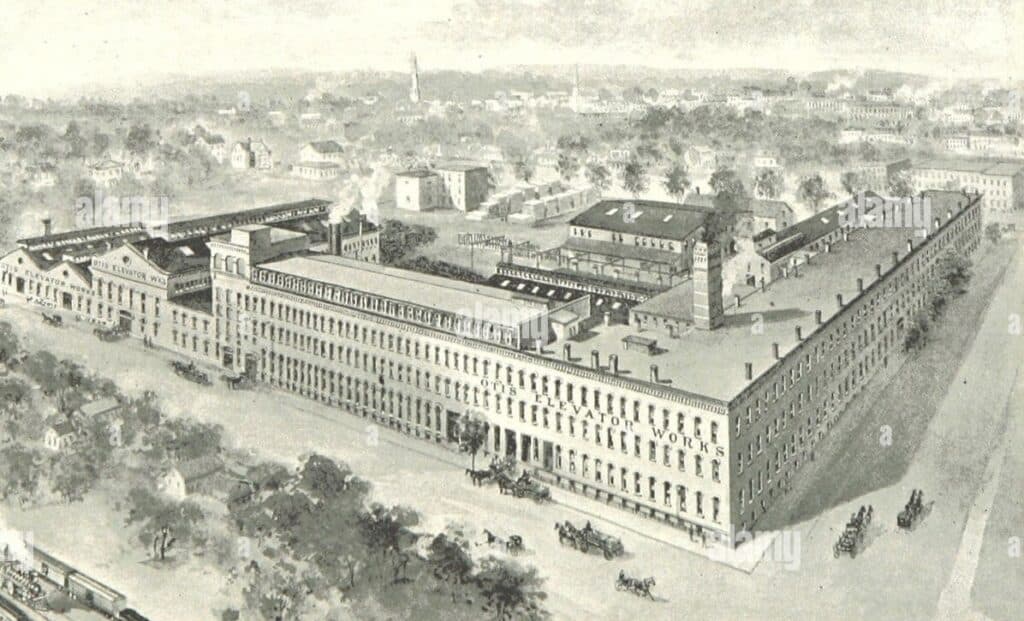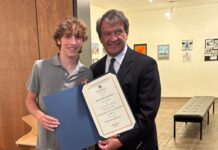
By Mary Hoar, City of Yonkers Historian, President Emerita Yonkers Historical Society, recipient of the 2004 Key to History, and President Untermyer Performing Arts Council
Monday, January 23rd
January 23, 1929: County Judge Fred Close signed an order to allow Dominick Rovielo of Oak Street to attend his wife’s funeral if he was manacled to a deputy sheriff. Rovielo was in County Jail awaiting trial on a charge of first-degree robbery.
January 23, 1937: While testifying before a Congressional Committee, Yonkers Otis works manager Robert Goodwillie admitted “operatives of the National Metal Trades Association,” (NMSTA) to which Otis belonged, were sent to Yonkers “in the past.” Otis’ employees worked under the watchful eyes of labor spies, with full knowledge of the Otis Company, to report on labor conditions.
NMSTA officers testified, substantiated by documentary evidence, workers were employed by NMSTA “to go into unionized factories and create disharmony… to preserve the associations’ ‘open shop” policy.”
Tuesday, January 24th
January 24, 1929: Burglary suspect Dominic Rovielo, manacled to a deputy sheriff, attended the funeral of his m he drove the robber to the crime scene, he said had no idea his friend planned a robbery. During the crime his friend, Joseph Scalice, was shot and killed by YPD Detective Patrick Christopher. Rovielo said he was so upset seeing his friend dead, he signed the confession without knowing what it was. The deputies returned Rovielo to his jail cell immediately after his wife’s internment.
January 24, 1942: City Manager and Acting Public Safety Commissioner Raymond Whitney refused to comment on the protest lodged by Charles Burgess of Highland Avenue about the large number of “bingo” parties oin Yonkers. Burgess considered the parties war waste, claiming thousands of dollars were wasted each week.
Wednesday, January 25th
January 25, 1935: Weather conditions were so severe, DPW crews had to use dynamite to blast mountains of snow sitting on the frozen surface of the Hudson. Trucks dumped huge piles of snow into the river from the City Pier, but, since the river surface was frozen, it just sat there. Once the blasts broke the frozen surface ice, the river carried away the snow.
January 25, 1949: Empire City Racetrack was sold to a syndicate of New York City businessmen for $2.4 million, about $500,000 more than its assessed value. The track had been closed to racing in 1943 because of wartime gas rationing; its races were run on Long Island tracks. During that time, it served as the finish line for the Yonkers Marathon.
Thursday, January 26th
January 26, 1929: In a case that was difficult to settle, Yonkers Judge John Broderick left it to the dog! Fannie Gensen found Teddy the dog about four months earlier and took him home. When she couldn’t find his owner, she kept him. Antonio Mascari recognized the dog in a park and claimed it, telling the family Teddy had run away. She gave him the dog… but he ran away again, going right back to Gensens. Mascari charged the Gensens with stealing his dog!
Faced with the tough decision in court, Broderick decided to let Teddy show where he wanted to live. The day of the experiment, the pooch bounded into the courtroom, sniffed about for a few seconds and then jumped into the laps of Mascara’s two boys. The Gensens coaxed him away for a few seconds, but he ran right back to the boys. Why? According to young Vincent Mascari, although Mrs. Gensen had fed Teddy meat every day, “we fed him spaghetti!”
Friday, January 27th
January 27, 1938: The new ferry, the “John J. Walsh” was the “latest in ferry design,” and guaranteed to give riders “plenty of fresh air.” Ninety-four Yonkers Ferry patrons disagreed! Unhappy with its cabin-less design, they hired a lawyer to force the company to provide a heated cabin to protect them from the elements while crossing the river. None of the complainants had cars to shelter in; instead, they were “whipped by the wind, cut in the face with sleet and virtually snowed on mid-Hudson.”
January 27, 1923: Herbert Storm of Elm Street admitted he was the Kleagle (leader) of the Westchester Ku Klux Klan, but refused to divulge the names of members of the Yonkers Klan to Police.
Saturday, January 28th
January 28, 1943: An early morning snowstorm continued throughout the day; by 1 pm five inches of snow had fallen, with the expectation it would continue until nightfall. Because of the high snow totals, elementary schools were sent home at noon!
January 28, 1946: The British government announced a Yonkers military officer would receive the Order of the British Empire (OBE) for distinguished service performed in cooperation with the British Armed Forces during WWII! Commander John Kinney Dougherty of Palisade Avenue had served with the Bureau of Ordnance in Washington; the award was in recognition for his exceptional liaison work with the British during WWII.
Sunday, January 29th
January 29, 1923: Although Westchester Klan kingpin Herbert Storm of Elm Street refused to name names, Captain Denis Cooper announced he had learned the identity of a number of local Klan members. Cooper hinted several were “professional and business men,” but few were “well known or prominent,’ and he refused to answer if any were local clergy. YPD had started investigating the Ku Klux Klan when they learned they were trying to organize a local chapter.
January 29, 1942: The government asked Otis Elevator Company to speed up production of 90-millimeter guns; used against high-flying enemy bombers, they more accurate than Germany’s version of the gun, a 88-millimeter gun. Otis’ contract to make the guns was for $4 million.
Questions or comments? Email YonkersHistory1646@gmail.com.
For information on the Yonkers Historical Society, Sherwood House and upcoming events, please call 914-961-8940, email info@yonkershistoricalsociety.org. or visit our website www.yonkershistoricalsociety.org.





